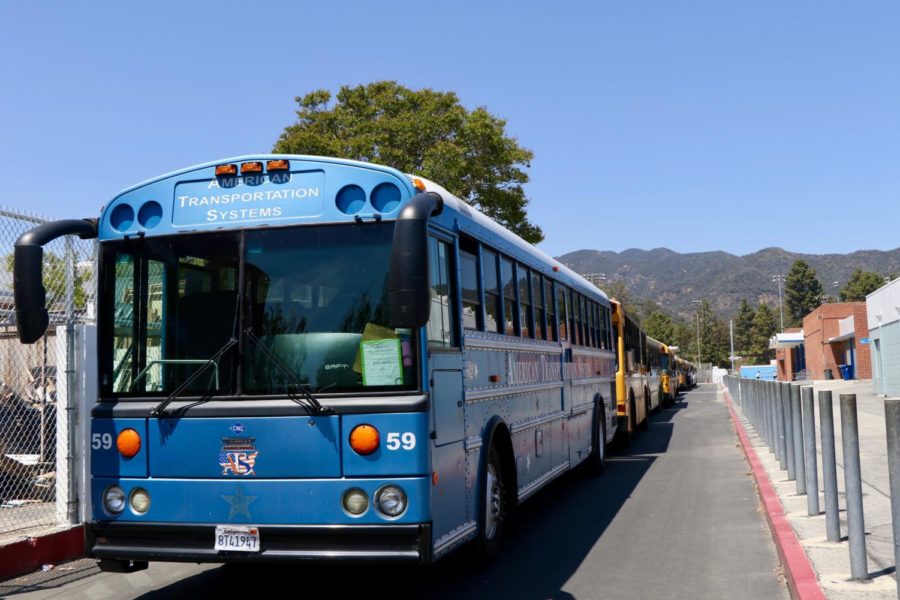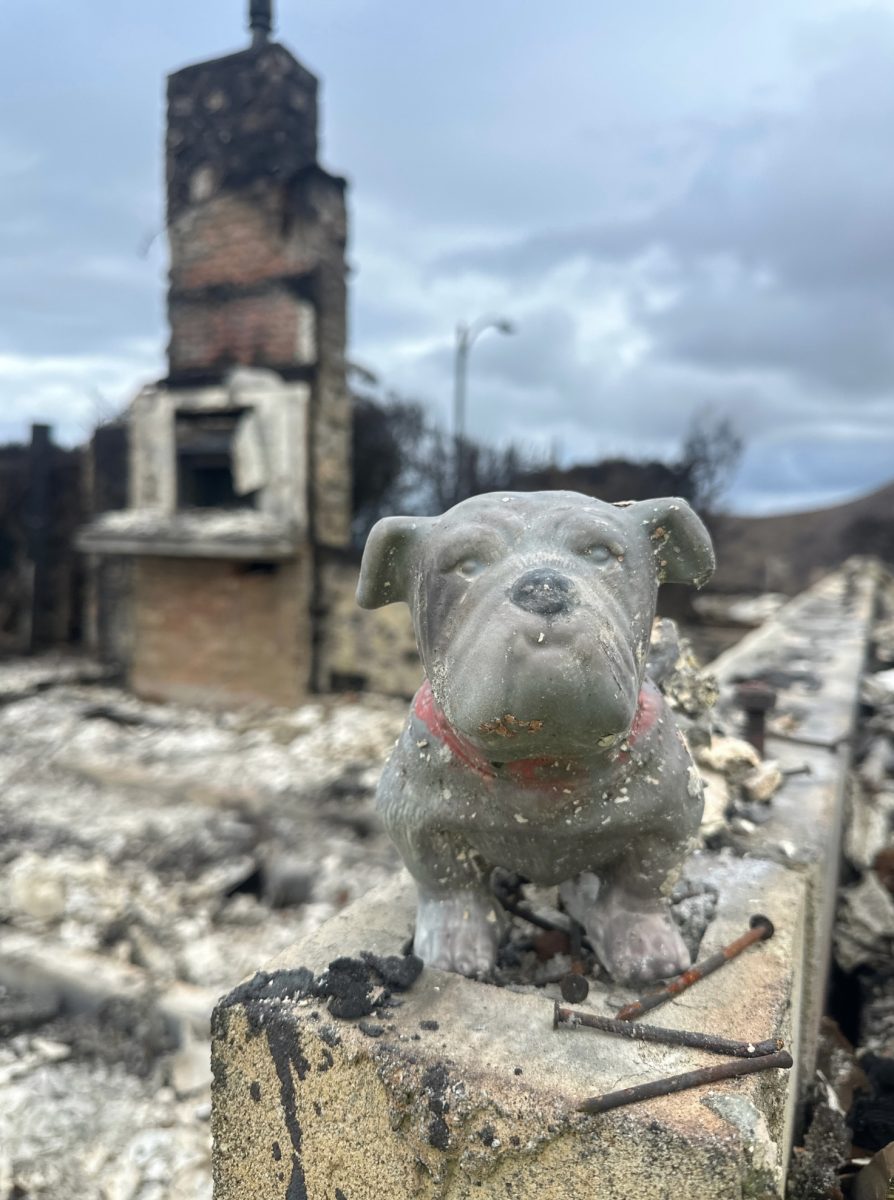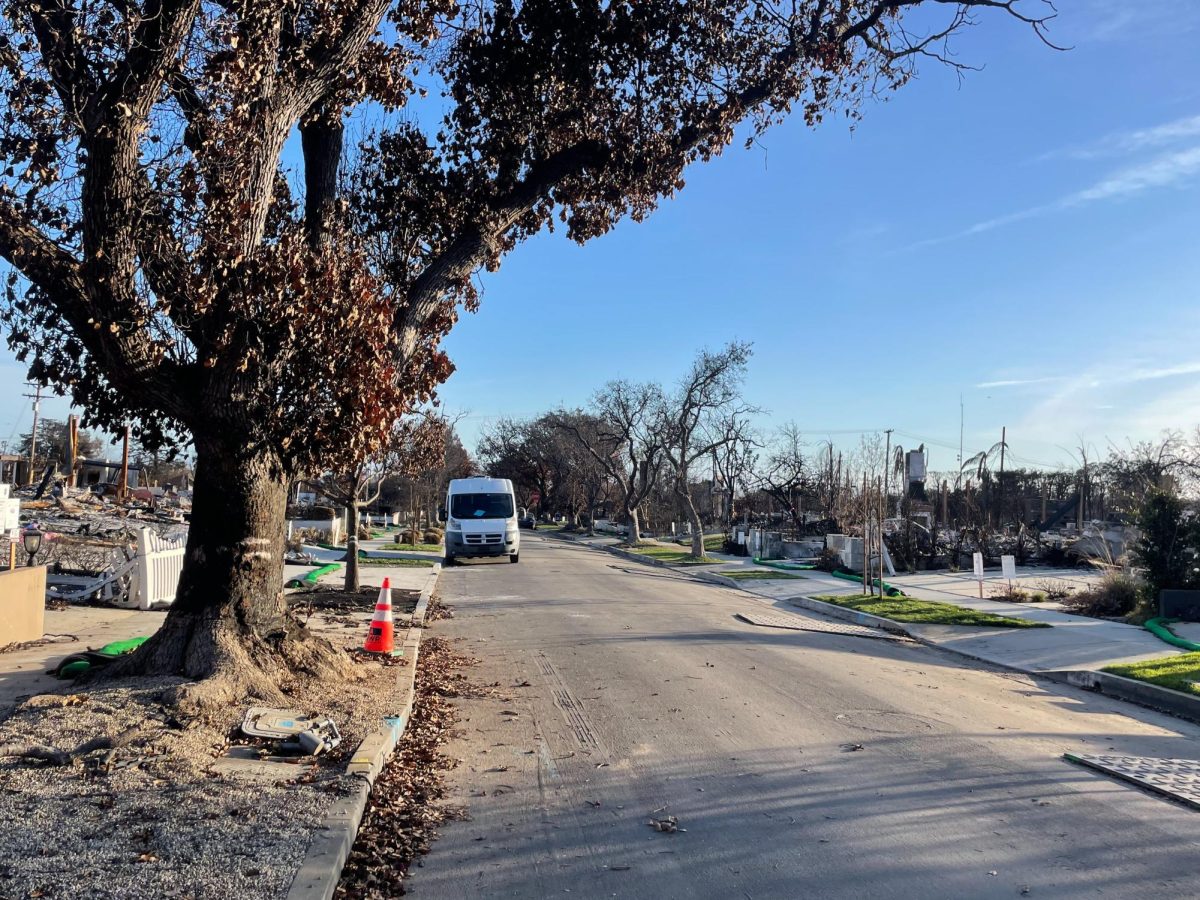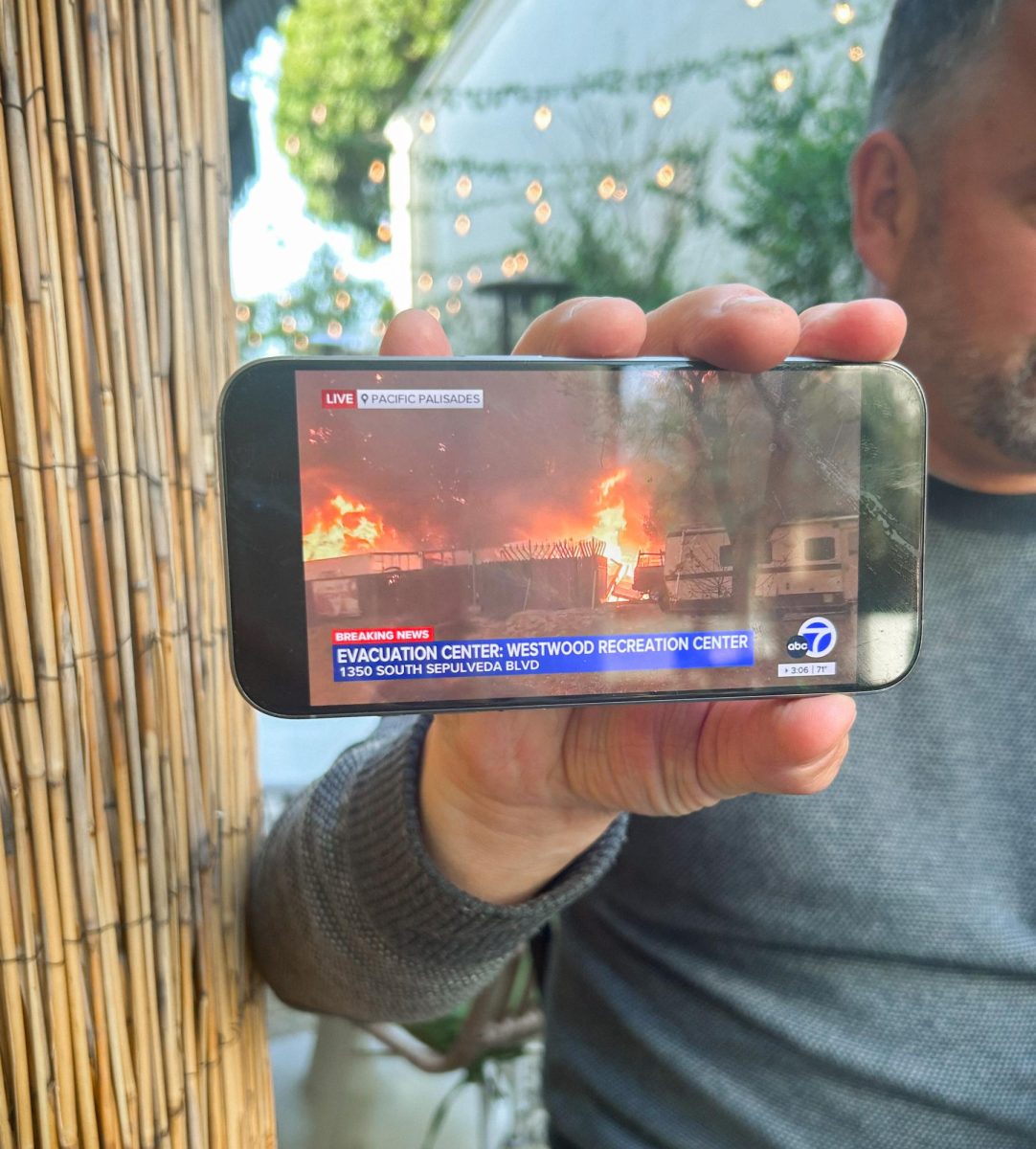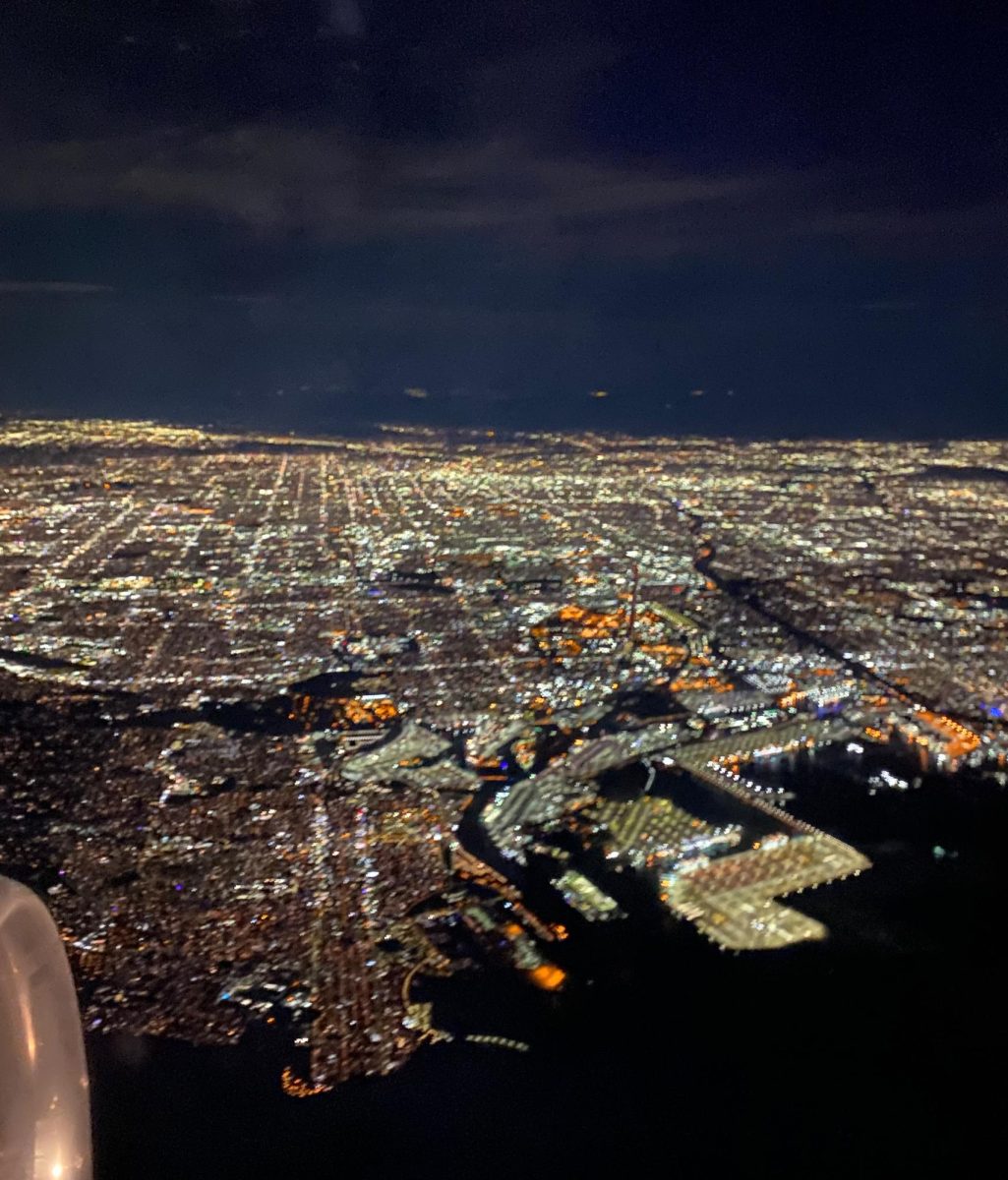Pali changes bus companies
October 4, 2018
Senior Tnsae Mulu rises before the sun does every day so that she can catch the school bus. She never complains, understanding that the sacrifice is part of attending Pali High.
But when school officials announced earlier this year that students and their families would have to absorb more of the cost of transportation, a bill that adds up to as much as $215 a month, many families began to worry about the fiscal impact of the change.
“I think it’s completely unfair that the buses are $2,000 [annually],” said Mulu, who has taken a school bus to get to Pali since her freshman year. “It got to the point where I was considering going to my home school.”
She is not alone. Approximately 300 students have withdrawn from Pali’s transportation services, citing financial concerns in regards to the raised prices, a school spokesman said.
Pali was forced to change bus companies last spring, dropping Durham in favor of American Transportation Services. According to Director of Operations Don Parcell, Durham was not reliable.
This change had a price tag. Transportation costs increased by 25 percent.
Students and parents said they were surprised when they learned they would have to contribute more to cover the cost of transportation. Some parents said they had to find alternative forms of transportation such as carpooling and public transit. Others said they had no choice but to pay the increased bus prices in order to get their children to school on time.
Parcell said changing bus companies was the best option for Pali, adding that Durham provided “anywhere from one to seven less buses each day [than] they were contractually obligated to send,” leaving the school to search for buses every day, which resulted in students arriving to class late on a regular basis.
Parcell also mentioned that those issues have not been ongoing with the new bus company. “[ATS] cares about [its] students more, tries harder to do the best job they can, has been far more on-time and reliable than the old company and the people are much easier to work with,” Parcell said.
Although ATS is getting students to school on time, students and their families are grappling with the cost increase. This is especially true for families who have more than one child at the school.
For students like Mulu, the switch has been especially difficult. “It’s very hard for my dad to pay it since he’s the only one working and I have 3 other siblings,” she said.
“Pali’s bus rates this year are far too expensive for my family,” said senior Erica Cutrono, who now uses a $24 Metro monthly bus pass to get to school. The daily one-way trip, which requires a transfer, takes a bit longer, Cutrono said, but at least now she is able to get to classes on time.
School officials are mindful of the hardship some families are facing, which is why transportation scholarships have been offered. Parcell emphasized that PCHS is doing what it can with its allotted budget, and fundraising efforts such as a GoFundMe site began in late September.
At the same time, PCHS administrators, academic department chairs as well as members of the budget committee are working towards resolving the budget shortfall of nearly $170,000 that was caused when state funding decreased, according to public records. The Budget Committee met Sept. 17 to discuss revising the budget. More meetings are scheduled.
“PCHS has provided as much bus financial assistance as were allocated in this year’s budget,” Parcell said.
Parcell added that staying with the previous bus company would have cost students more than the current bus company — and any other company that was willing to work with PCHS would have been 50 percent higher than the current price.
Although some students have been tasked with finding alternate forms of transportation, there are still students who have no other choice but to take the bus to school.
“I prefer this bus company, just not the prices,” Mulu said, mainly because the bus last year was frequently late and almost led her to missing her AP™ United States History Exam.
Additionally, Mulu also mentioned that last year, the bus drivers were almost always switching, making it much harder for her to find the bus before and after school.
Mulu said that the buses used last year were “really old and had seats that looked like Metro buses.” Although the quality of buses this year is much better than the last, Mulu said her family still struggles to afford the bus.
While some students are able to deal with this change, others had no choice but to find alternative forms of transportation. A senior who has taken the school bus since her freshman year, Cutrono now faces this challenge.
“A lot of mornings my mom had to drive me to school because the buses were late,” Cutrono said. “It was a great inconvenience for us, because my mom shouldn’t have to be driving me to school if we’re paying for the bus.”
Now that she is using public transportation, Cutrono said that she usually does not experience huge delays. She also gets home in a timely manner.
It is too early in the school year to gauge the full impact that switching to ATS will have on Pali, but for now, students will continue taking the bus no matter the potential obstacles.


